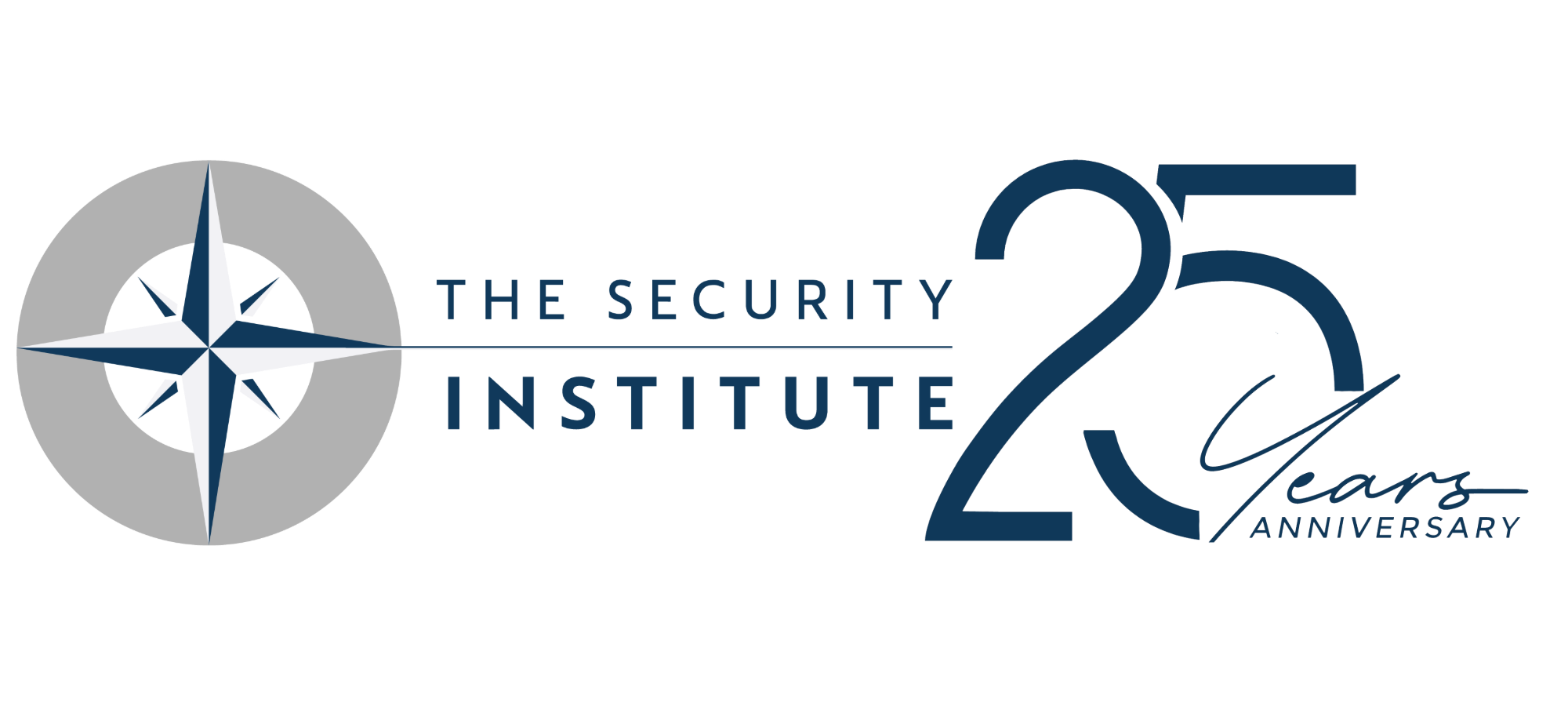We are The Security Institute: The Foremost Membership Organisation for the Security Profession.
The Security Institute is the UK’s largest professional membership body for security professionals.
We work with government, public institutions, private companies as well as other security organisations to influence positive change within the industry, helping to raise professional standards and integrity.
The Security Institute is, at its core, a membership organisation.
Set up in 1999, it was created to support security professionals across the full spectrum of security disciplines.
We are well respected – a voice of authority within our industry.
Our role began as and remains one of professionalisation, influence and creating a positive membership experience.


The Security Institute has led the way with diversity, inclusivity and next generation initiatives, and has been delighted to see these being taken up within the wider security community.
We will continue to champion these values, which are now firmly embedded as part of our overall practice.
The Security Institute provides a home for all those who wish to improve standards and aspire to achieve professional recognition and status.
Our members come from a broad range of backgrounds, and bring their experience, expertise, and qualifications together to promote the security industry amongst service users and the general public.
Our members-only special interest groups (SIGs) are an excellent demonstration of this unparalleled expertise, comprised of the best and brightest from every sector of the security world.

Personnel security is the measures put in place to mitigate against a specific type of security risk – the insider risk.
Insider risk is the potential that an individual (member of staff, third part supplier, stakeholder) uses their legitimate access for to cause harm. This can range from unauthorised disclosure of information, sabotage or process corruption, third party facilitation, fraud or violence. Mitigations for insider risk are business wide requiring HR, operations, cyber and physical security to work together throughout the employment lifecycle of individuals.
Cyber security refers to the practice of protecting systems, networks and data from digital attacks. Like Technical security, it involves implementing measures such as firewalls, antivirus software, intrusion detection systems and encryption to safeguard against rogue access, data breaches and other cyber threats. The primary purpose of Cyber security is to make systems safe: to ensure the confidentiality and integrity of information and protect critical assets while ensuring safe operation of technological infrastructure.
Technical security is the practice of detecting the compromise of protective security systems, analysis and prevention of technical attack (technical espionage), mitigation of technology vulnerabilities and the deployment of countermeasures. Activities can include vulnerability analysis and inspections, defensive monitoring, construction security and installations.
Physical security is the physical protection of buildings, assets, and personnel, from physical attacks (such as violent protest, criminal damage, terrorism) that could cause serious loss or damage.
Physical security is a systematic approach implementing various layers of interdependent systems, to deter, detect and delay would be attackers. Examples of physical security include CCTV systems, security officers, protective barriers, locks, access control protocols, security communications. Effective physical security integrates with the other forms of security to ensure converged protection.
Security encompasses four main areas: personnel, physical, technical and cyber.
Each plays a crucial role in the overall protective security framework. To find out more, click below.

Members are the keystone of The Security Institute. Member experience and benefits are central to our decision making. Strategically we are focused on ensuring the security profession is inclusive for all and that anybody wanting to join our sector and progress will find all of the information they need through The Security Institute.

Delivering the right services to our members to support their ongoing learning, education and development needs, whatever their entry point into this industry, is one of the key drivers of the Institute. Providing flexible, “cradle to grave” learning opportunities and working with government and academia to support relevant security education are another cornerstone of our mission as an organisation.

Third among our key objectives is that we continue to influence the right people to make strategic positive change for the security profession. We have a cohesive narrative, supported by our patrons, members, stakeholders, corporate partners and sponsors to be a leading voice in our industry. Our expert opinions as a collective voice are sought as part of ongoing governmental decision-making on protective security for society.
At The Security Institute, we operate under three strategic pillars which form the core of our organisation. They are: Membership, Professionalisation, and Influence.
Each pillar is just as integral to our mission as any other. To find out more about each one, click the links to see the strengths of our foundations.

At The Security Institute, our greatest assets are our members. Their knowledge, experience and expertise are unparalleled.
To find out more on how to become a member, what our member benefits are, and the numerous member groups, please click below.

One of the core pillars of our organisation is that of the ongoing professionalisation of our industry. That is why we are committed to providing the right education and the pathways for current and would-be security professionals.
To learn more about boosting your career, follow the link below.

The highest grade of membership that we at The Security Institute bestow is that of Fellowship. Only the very best, brightest, most influential and most knowledgeable members ever receive this distinction.
To find out how to become one, or to hear the stories of those that already have, click here.
”Stagnation is Not an Option” Date: 16 December 2025 Time: 13:00–14:00 GMT | 08:00–09:00 EST Hosted by:
Date: Wednesday 4th March 2026 Location: The Cumberland Hotel, Great Cumberland Pl, Marble Arch, London, W1H 7DL
Date: Monday 1st of December 2025 Location: JW Marriott Grosvenor House, Park Lane, London Celebrate the very
🗓 Date: Wednesday, 19 November 2025 ⏰Time: 10:00 – 11:00 BST The National Counter Terrorism Security Office
Date: Wednesday 17th December 2025 Location: The Wellington, 351 Strand, Greater, London WC2R 0HS Dress Code :
🗓 Date: Thursday 25th September ⏰Time: 13:00 – 14:00 Join us for a joint webinar from the
Date: Friday, 7th November 2025 Location: Victory Services Club, London The Close Protection World Global Security &
Date: Tuesday 30 September 2025 (09:30 – 17:30) and Wednesday 1 October 2025 (09:30 – 16:00) Location:
Date: Wednesday 7th January. Time: 14:00 – 15:00 BST Welcome to our bi-weekly session of Catch Up
Date: 20th of November 2025 Location: Millennium Hotel and Conference Centre Gloucester London, SW7 4LH Dress Code:
Date: 15th October 2025 Location: Andaz London Liverpool Street. This year marks a remarkable milestone – 25
Date: Tuesday 28th – Thursday 30th of April 2026 Location: NEC Birmingham The Security Event is the
November 20th, 2025, Central London: The Security Institute proudly welcomed Her Royal Highness The Princess Royal, Royal
15 October 2025 — The Security Institute celebrated a quarter of a century of leadership, learning, and
The Security Institute is delighted to announce that, following careful consideration and deliberation, the Board of Directors
Ms Susan Jones, Master of the Worshipful Company of Security Professionals (WCoSP), announced the continuation of the
The Security Institute held its Annual General Meeting (AGM) on the 8th of July at the Millennium
The Security Institute Annual Report is now publicly available! You can find the full report here.
